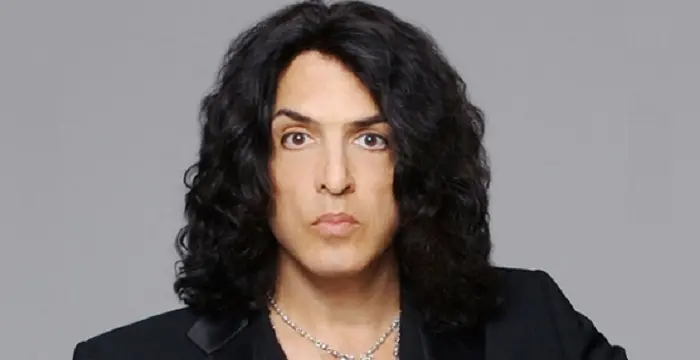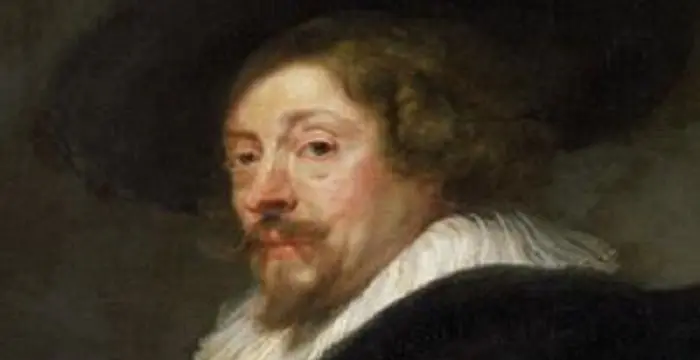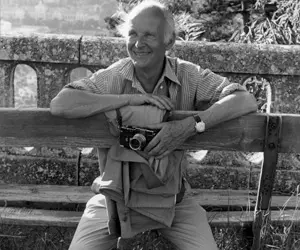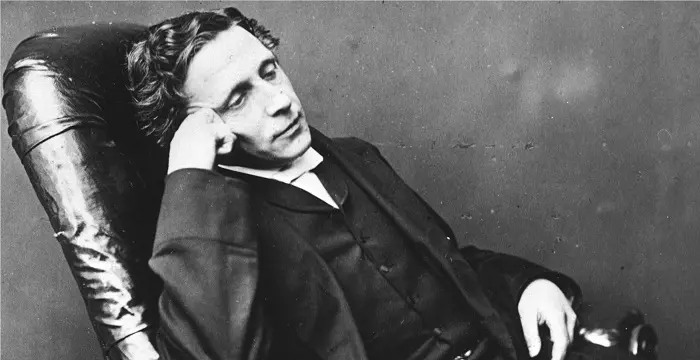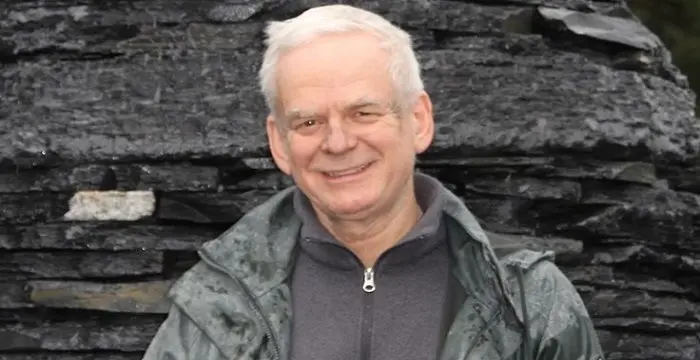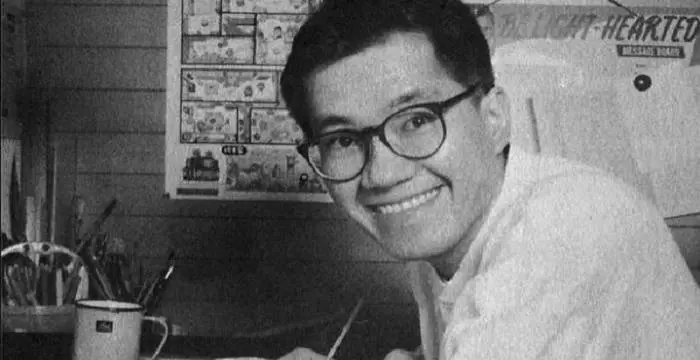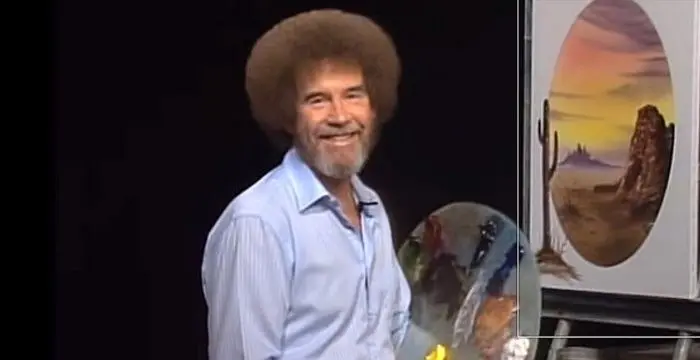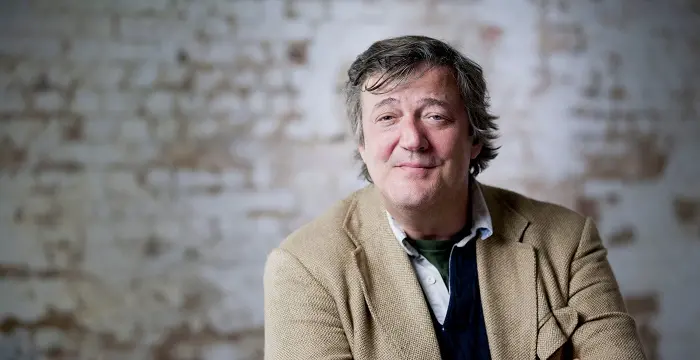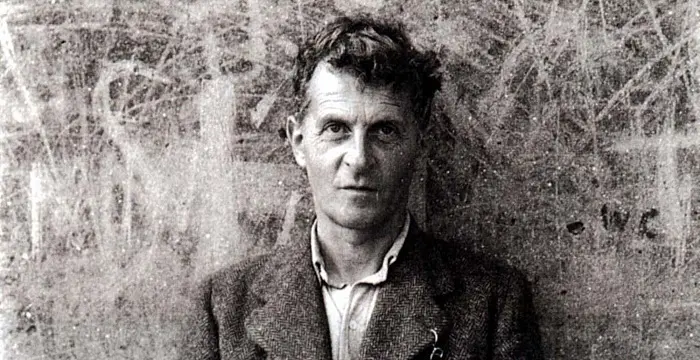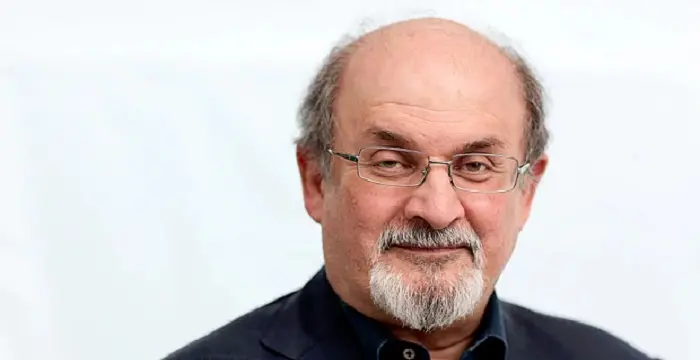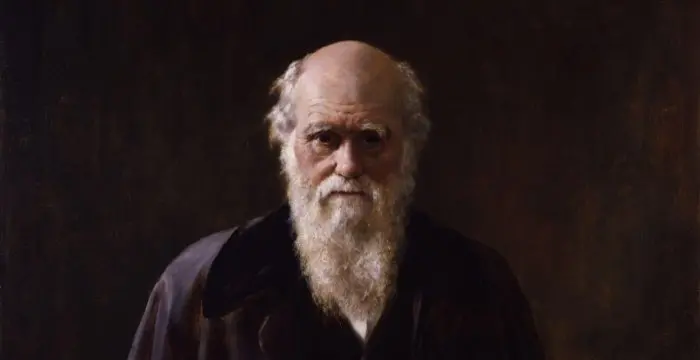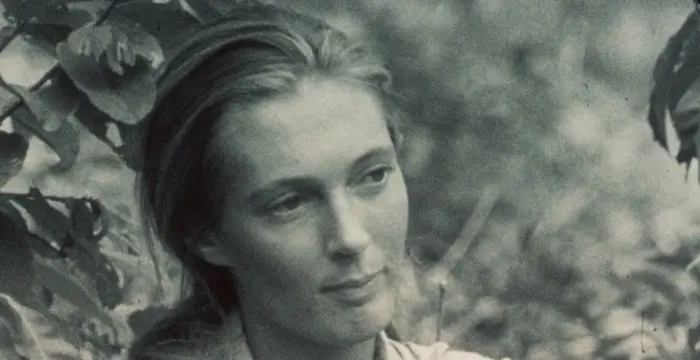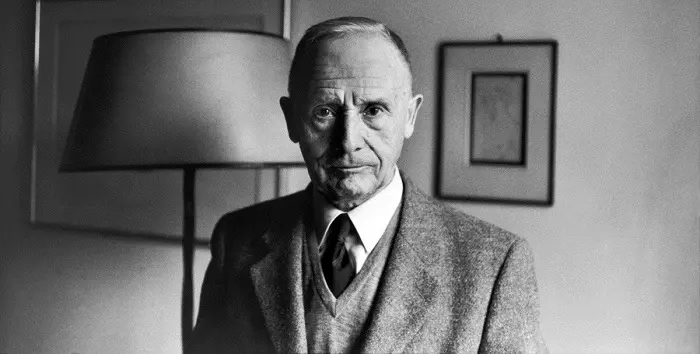
Henri Cartier-Bresson - Painters, Birthday and Childhood
Henri Cartier-Bresson's Personal Details
Henri Cartier-Bresson was a French photographer
| Information | Detail |
|---|---|
| Birthday | August 22, 1908 |
| Died on | August 3, 2004 |
| Nationality | French |
| Famous | Atheists, Cambridge University, Artists, Photographers, Painters, Photographers |
| Spouses | Ratna Mohini |
| Childrens | Mélanie |
| Universities |
|
| Notable Alumnis |
|
| Birth Place | Chanteloup-en-Brie, France |
| Gender | Male |
| Sun Sign | Leo |
| Born in | Chanteloup-en-Brie, France |
| Famous as | Photographer and Painter |
| Died at Age | 95 |
// Famous Painters
Mary Pinchot Meyer
Mary Pinchot Meyer was an American journalist and painter who became famous for her alleged affair with the former US president John F Kennedy. This biography profiles her childhood, family, personal life, etc.
Paul Stanley
Paul Stanley is a famous American hard rock guitarist, singer, songwriter and painter. This biography offers detailed information about his childhood, life, works, career and timeline.
Peter Paul Rubens
Peter Paul Rubens was a Dutch artist, who rose to become one of the most influential Baroque painters of his generation. This biography profiles his childhood, life, painting career, achievements and timeline.
Henri Cartier-Bresson's photo
Who is Henri Cartier-Bresson?
Henri Cartier-Bresson was a French photographer. Born into a bourgeois family, he enjoyed the benefit of indulging in the arts. As a young boy, he owned a Box Brownie that he used for taking holiday snapshots. Later in life, he would purchase a Leica camera with 50 mm lens. He entered Lhote Academy of Cubist painter and sculptor André Lhote in Paris. He attended the University of Cambridge, and studied English, art and literature. He then completed his mandatory service in the French Army. During World War II, he was a Corporal in the Film and Photo unit. He was captured by German soldiers, and spent 35 months in Nazi prisoner-of-war camps. He covered the coronation of King George VI and Queen Elizabeth focusing on the people lining the London streets. He worked with photographers like David “Chim” Seymour and Robert Capa with whom he formed Magnum Photos. He was assigned to India and China. In India, he photographed Mahatma Gandhi just 15 minutes before he was shot dead. He covered the Chinese Civil War, and was the first Western photographer to photograph “freely” in the post-war Soviet Union. He founded the Henri Cartier-Bresson Foundation with his wife and daughter to preserve and share his legacy.
// Famous Photographers
Lewis Carroll
Lewis Carroll was an English writer, mathematician and photographer. Check out this biography to know about his childhood, family life, achievements and other facts related to his life.
Andy Goldsworthy
Andy Goldsworthy is a British sculptor and photographer. This biography provides detailed information about his childhood, life, career, achievements, creations, works & timeline.
Berenice Abbott
Berenice Abbott was a well-known American photographer. This biography provides detailed information about her childhood, life, achievements, works & timeline.
Childhood & Early Life
Henri Cartier-Bresson was born in Chanteloup-en-Brie, Seine-et-Marne, France, on August 22, 1908. His father was a wealthy textile manufacturer, while his mother’s family were cotton merchants and landowners from Normandy.
Young Henri owned a Box Brownie that he used for taking holiday snapshots. He later experimented with a 3×4 inch view camera. His parents raised him in traditional French bourgeois fashion.
He attended École Fénelon, a Catholic school. His uncle Louis introduced him to oil painting. The painting lessons were cut short, when his uncle died in World War I.
Career and Later Life
In 1927, Cartier-Bresson entered Lhote Academy, the studio of Cubist painter and sculptor André Lhote in Paris. He studied classical artists and contemporary art. He also studied painting with portraitist Jacques Émile Blanche.
From 1928 to 1929, Cartier-Bresson attended the University of Cambridge, where he studied English, art and literature, and became bilingual. He then completed his mandatory service in the French Army, stationed at Le Bourget.
In 1929, his air squadron commandant placed him under house arrest for hunting without license. American expatriate Harry Crosby persuaded the officer to release Cartier-Bresson into his custody. They spent time taking and printing pictures.
He went to Côte d’Ivoire in French colonial Africa. He survived by shooting and selling game. He took a portable camera. However, only seven photographs survived the tropics.
He returned to France in late 1931, and deepened his relationship with the Surrealists. The photographs taken by Hungarian photojournalist Martin Munkacsi inspired him to take up photography seriously.
He acquired a Leica camera with 50 mm lens in Marseilles. To maintain anonymity to overcome the formal and unnatural behavior of his subjects, he painted its shiny parts with black paint.
He photographed Berlin, Brussels, Warsaw, Prague, Budapest and Madrid. His first photograph exhibition was at the Julien Levy Gallery in New York in 1932, and subsequently at the Ateneo Club in Madrid.
He met photographers David “Chim” Seymour and Robert Capa, They shared a studio, and Capa mentored Cartier-Bresson. In 1935, he traveled to the US to exhibit his work at New York’s Julien Levy Gallery.
He returned to France, and approached Jean Renoir. He acted in Renoir’s “Partie de champagne” and “La Règle du jeu”. He helped Renoir make a film on the 200 families who ran France.
In 1937, he covered the coronation of King George VI and Queen Elizabeth, for the French weekly Regards. He focused on the people lining the London streets alone. His photo credit read “Cartier”.
Between 1937 and 1939, he worked as a photographer for the French Communists’ evening paper, Ce Soir. He was a leftist, but he did not join the French Communist party.
He joined the French Army during World War II as a Corporal in the Film and Photo unit. In 1940, he was captured by German soldiers and spent 35 months in Nazi prisoner-of-war camps.
He tried twice to escape from the prison camp, and was punished by solitary confinement. Successful at the third attempt, he hid on a farm in Touraine, and with false papers traveled to France.
In France, he went underground, aided other escapees, and worked secretly with other photographers to cover the Occupation, and then the Liberation of France. In 1943, he recovered his buried Leica camera.
During the Chinese Civil War in 1949, he covered the Kuomintang’s last six months, and the Maoist People’s Republic’s first six months. He also photographed the last surviving Imperial eunuchs in Beijing.
Cartier-Bresson held his first exhibition in France at the Pavillon de Marsan in the Louvre in 1955. He became the first Western photographer to photograph “freely” in the post-war Soviet Union.
Cartier-Bresson withdrew as a principal of Magnum in 1966. He retired from photography, and returned to drawing and painting. He held his first exhibition of drawings at the Carlton Gallery in New York.
Major Works
Cartier-Bresson’s book, “The Photographs of Henri Cartier-Bresson” was published in 1947. Along with Robert Capa, David Seymour, William Vandivert and George Rodger, he founded Magnum Photos, a cooperative picture agency owned by its members.
Magnum’s assignment took him to India and China. He achieved international recognition for his photograph of Gandhi, 15 minutes before he was shot dead and the coverage of Gandhi’s funeral in India in 1948.
In 1952, Cartier-Bresson published his book “Images à la sauvette”. Its English edition was titled “The Decisive Moment”. It included a portfolio of 126 of his photos. Henri Matisse drew the cover.
Awards & Achievements
Cartier-Bresson won the Overseas Press Club of America Award four times from 1948 to 1964. Other awards during that time include The A.S.M.P. Award, and The Prix de la Société française de photographie.
From 1974 to 2006, he was awarded The Culture Prize, Deutsche Gesellschaft für Photographie, Grand Prix National de la Photographie, Hasselblad Award, and Prix Nadar for the photobook Henri Cartier-Bresson: Scrapbook.
Personal Life & Legacy
In 1929, Cartier-Bresson embraced the open sexuality offered by Crosby and his wife Caresse. He had an intense sexual relationship with her. His affair ended in heartbreak two years after Crosby committed suicide.
In 1937, he married Javanese dancer, Ratna Mohini. They divorced after 30 years of married life. Three years later, he married Magnum photographer Martine Franck. The couple had a daughter, Mélanie.
In 2003, he created the Henri Cartier-Bresson Foundation with his wife and daughter to preserve and share his legacy.
He died in Montjustin, France, on August 3, 2003, and was buried in the local cemetery.
Trivia
After contracting blackwater fever, this photographer instructed his grandfather to bury him in Normandy while Debussy’s String Quartet was played. His uncle replied his grandfather finds it expensive, and prefers that he return first.
// Famous Artists
Susan Mikula
Susan Mikula is an American artist and photographer. Check out this biography to know about her childhood, family life, achievements and fun factsabout her life.
Akira Toriyama
Akira Toriyama is a Japanese manga artist. This biography profiles his childhood, family, personal life, achievements, etc.
Bob Ross
Bob Ross was a celebrated, creative American painter and an art instructor. Check out this biography to know about his birthday, childhood, family life, achievements and fun facts about him.
Henri Cartier-Bresson's awards
| Year | Name | Award |
|---|---|---|
Other | ||
| 1959 | The Prix de la Société française de photographie | |
| 1960 | Overseas Press Club of America Award | |
| 1964 | Overseas Press Club of America Award | |
| 1974 | The Culture Prize | |
| 0 | Deutsche Gesellschaft für Photographie | |
| 1981 | Grand Prix National de la Photographie | |
| 1982 | Hasselblad Award | |
| 2006 | Prix Nadar for the photobook Henri Cartier-Bresson: Scrapbook | |
| 0 | 1948 - Overseas Press Club of America Award | |
| 0 | 1953 - The A.S.M.P. Award | |
| 0 | 1954 - Overseas Press Club of America Award | |
Henri Cartier-Bresson biography timelines
- // 22nd Aug 1908Henri Cartier-Bresson was born in Chanteloup-en-Brie, Seine-et-Marne, France, on August 22, 1908. His father was a wealthy textile manufacturer, while his mother’s family were cotton merchants and landowners from Normandy.
- // 1927In 1927, Cartier-Bresson entered Lhote Academy, the studio of Cubist painter and sculptor André Lhote in Paris. He studied classical artists and contemporary art. He also studied painting with portraitist Jacques Émile Blanche.
- // 1928 To 1929From 1928 to 1929, Cartier-Bresson attended the University of Cambridge, where he studied English, art and literature, and became bilingual. He then completed his mandatory service in the French Army, stationed at Le Bourget.
- // 1929In 1929, his air squadron commandant placed him under house arrest for hunting without license. American expatriate Harry Crosby persuaded the officer to release Cartier-Bresson into his custody. They spent time taking and printing pictures.
- // 1931He returned to France in late 1931, and deepened his relationship with the Surrealists. The photographs taken by Hungarian photojournalist Martin Munkacsi inspired him to take up photography seriously.
- // 1932He photographed Berlin, Brussels, Warsaw, Prague, Budapest and Madrid. His first photograph exhibition was at the Julien Levy Gallery in New York in 1932, and subsequently at the Ateneo Club in Madrid.
- // 1935He met photographers David “Chim” Seymour and Robert Capa, They shared a studio, and Capa mentored Cartier-Bresson. In 1935, he traveled to the US to exhibit his work at New York’s Julien Levy Gallery.
- // 1937In 1937, he covered the coronation of King George VI and Queen Elizabeth, for the French weekly Regards. He focused on the people lining the London streets alone. His photo credit read “Cartier”.
- // 1937 To 1939Between 1937 and 1939, he worked as a photographer for the French Communists’ evening paper, Ce Soir. He was a leftist, but he did not join the French Communist party.
- // 1937 To 1967In 1937, he married Javanese dancer, Ratna Mohini. They divorced after 30 years of married life. Three years later, he married Magnum photographer Martine Franck. The couple had a daughter, Mélanie.
- // 1940He joined the French Army during World War II as a Corporal in the Film and Photo unit. In 1940, he was captured by German soldiers and spent 35 months in Nazi prisoner-of-war camps.
- // 1947Cartier-Bresson’s book, “The Photographs of Henri Cartier-Bresson” was published in 1947. Along with Robert Capa, David Seymour, William Vandivert and George Rodger, he founded Magnum Photos, a cooperative picture agency owned by its members.
- // 1948Magnum’s assignment took him to India and China. He achieved international recognition for his photograph of Gandhi, 15 minutes before he was shot dead and the coverage of Gandhi’s funeral in India in 1948.
- // 1948 To 1964Cartier-Bresson won the Overseas Press Club of America Award four times from 1948 to 1964. Other awards during that time include The A.S.M.P. Award, and The Prix de la Société française de photographie.
- // 1949During the Chinese Civil War in 1949, he covered the Kuomintang’s last six months, and the Maoist People’s Republic’s first six months. He also photographed the last surviving Imperial eunuchs in Beijing.
- // 1952In 1952, Cartier-Bresson published his book “Images à la sauvette”. Its English edition was titled “The Decisive Moment”. It included a portfolio of 126 of his photos. Henri Matisse drew the cover.
- // 1955Cartier-Bresson held his first exhibition in France at the Pavillon de Marsan in the Louvre in 1955. He became the first Western photographer to photograph “freely” in the post-war Soviet Union.
- // 1966Cartier-Bresson withdrew as a principal of Magnum in 1966. He retired from photography, and returned to drawing and painting. He held his first exhibition of drawings at the Carlton Gallery in New York.
- // 1974 To 2004From 1974 to 2006, he was awarded The Culture Prize, Deutsche Gesellschaft für Photographie, Grand Prix National de la Photographie, Hasselblad Award, and Prix Nadar for the photobook Henri Cartier-Bresson: Scrapbook.
- // 2003In 2003, he created the Henri Cartier-Bresson Foundation with his wife and daughter to preserve and share his legacy.
- // 3rd Aug 2004He died in Montjustin, France, on August 3, 2003, and was buried in the local cemetery.
// Famous Cambridge University
Stephen Fry
Stephen Fry is a comedian, actor, author, television and radio presenter. Read the biography and know all about his childhood, career, profile and timeline.
Ludwig Wittgenstein
Ludwig Wittgenstein is a renowned philosopher. Read on to know about the life, career, and works of the famous Austrian philosopher Ludwig Wittgenstein.
Rupert Brooke
Rupert Brooke was an English poet who is widely known for his poem ‘The Soldier’, which was a part of five war sonnets. This biography of Rupert Brooke provides detailed information about his childhood, life, achievements, works & timeline
Salman Rushdie
Salman Rushdie is one of the most prominent writers of the twentieth century. Read the biography to get details about his life, childhood, profile & timeline.
Charles Darwin
Charles Darwin was one of the most influential figures in human history. Go through this biography to get details about his life, profile and timeline.
Jane Goodall
Jane Goodall is an English Animal Rights activist, famously dubbed as “The Woman who redefined man”. This biography of Jane Goodall provides detailed information about her childhood, life, achievements, works & timeline.
Henri Cartier-Bresson's FAQ
What is Henri Cartier-Bresson birthday?
Henri Cartier-Bresson was born at 1908-08-22
When was Henri Cartier-Bresson died?
Henri Cartier-Bresson was died at 2004-08-03
Where was Henri Cartier-Bresson died?
Henri Cartier-Bresson was died in Montjustin, France
Which age was Henri Cartier-Bresson died?
Henri Cartier-Bresson was died at age 95
Where is Henri Cartier-Bresson's birth place?
Henri Cartier-Bresson was born in Chanteloup-en-Brie, France
What is Henri Cartier-Bresson nationalities?
Henri Cartier-Bresson's nationalities is French
Who is Henri Cartier-Bresson spouses?
Henri Cartier-Bresson's spouses is Ratna Mohini
Who is Henri Cartier-Bresson childrens?
Henri Cartier-Bresson's childrens is Mélanie
What was Henri Cartier-Bresson universities?
Henri Cartier-Bresson studied at Cambridge University, École Fénelon, Lycée Condorcet
What was Henri Cartier-Bresson notable alumnis?
Henri Cartier-Bresson's notable alumnis is Cambridge University
What is Henri Cartier-Bresson's sun sign?
Henri Cartier-Bresson is Leo
How famous is Henri Cartier-Bresson?
Henri Cartier-Bresson is famouse as Photographer and Painter

